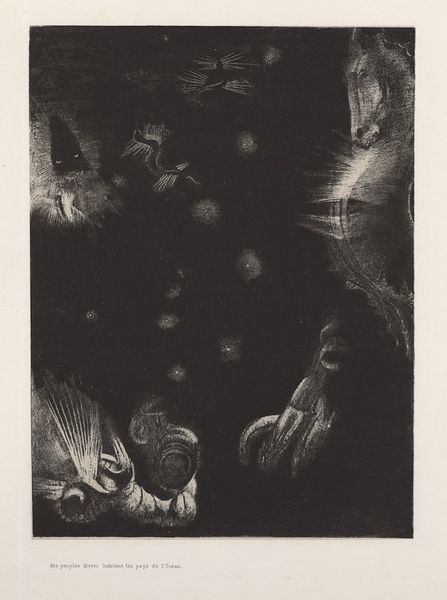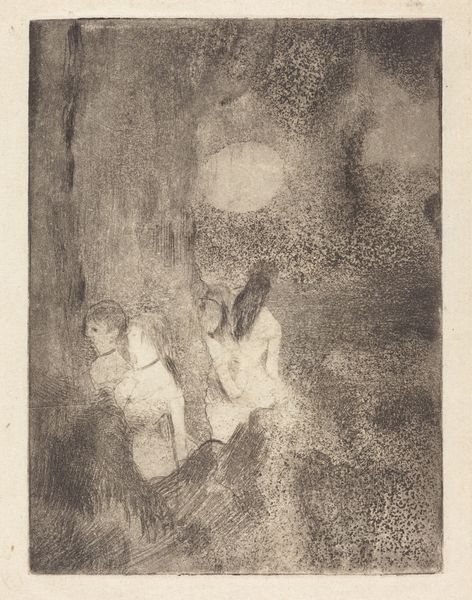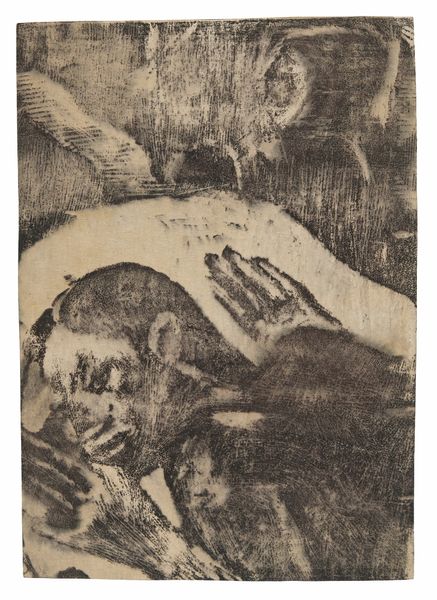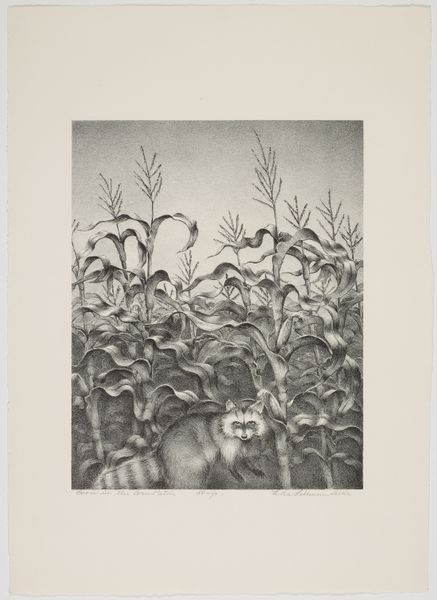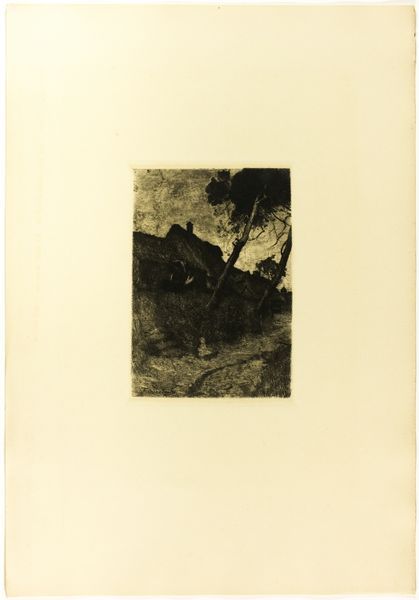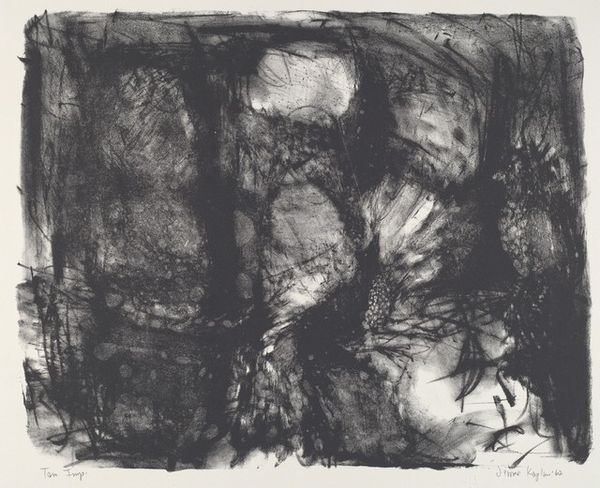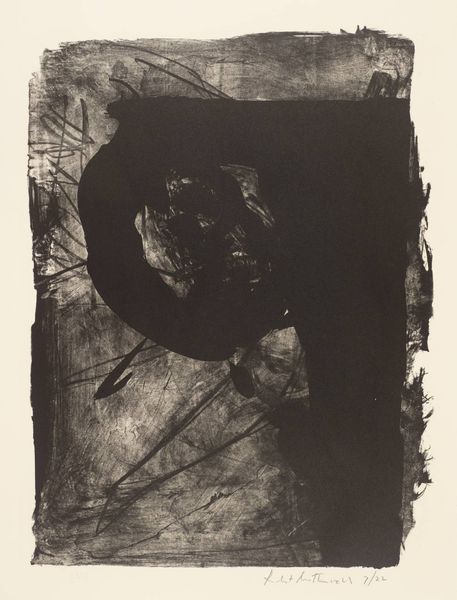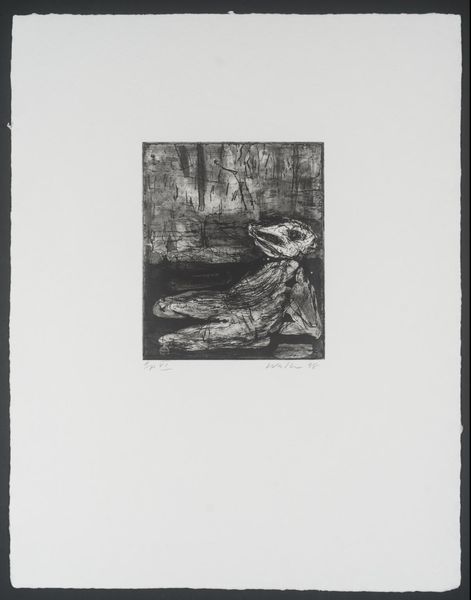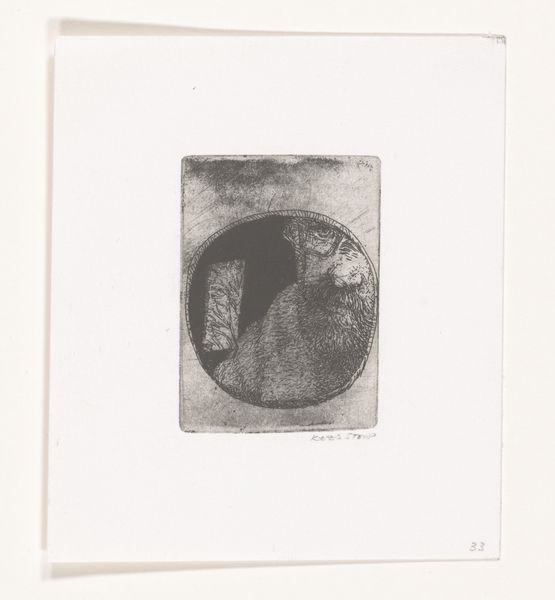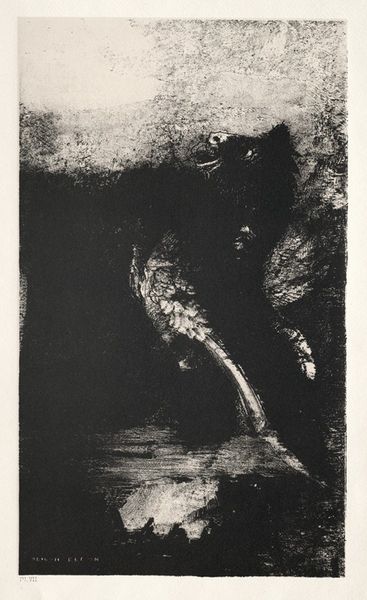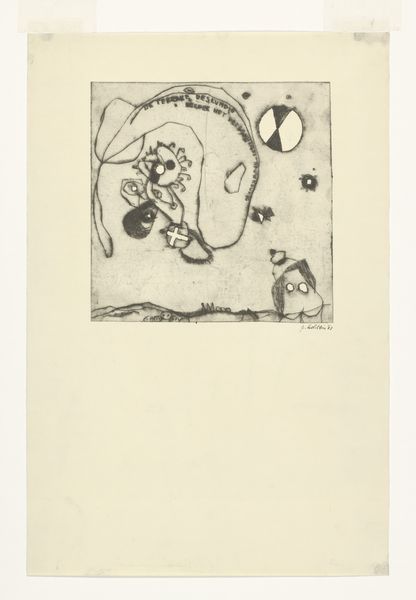
Different Peoples Inhabit the Countries of the Ocean, plate 23 of 24 1896
0:00
0:00
drawing, lithograph, print, paper, ink
#
drawing
#
light pencil work
#
lithograph
# print
#
fantasy-art
#
figuration
#
paper
#
ink
#
france
#
symbolism
Dimensions: 308 × 230 mm (image); 310 × 234 mm (chine); 458 × 349 mm (sheet)
Copyright: Public Domain
Editor: So, here we have Odilon Redon’s lithograph, "Different Peoples Inhabit the Countries of the Ocean, plate 23 of 24," from 1896. It's incredibly dreamlike. I am very much drawn to the use of ink to suggest light in a very dark space. What are your initial thoughts on this work? Curator: The printing process here is central. Think about the labor involved in creating a lithograph in the late 19th century. The artist meticulously applies greasy materials to the stone, exploiting the chemical repulsion of grease and water. Redon's use of this method democratizes the distribution of his art – these prints can be disseminated widely, unlike unique paintings. The consumption of art becomes more accessible to the rising middle class. Editor: That's fascinating! I hadn't really considered how the method relates to distribution. But the dreamlike imagery, like the floating figures – isn't that a rejection of the everyday production line of reality, as opposed to accessibility? Curator: Not necessarily a rejection, but an alternative offering. He is using readily available materials and processes, to produce imagery for mass consumption, in line with Symbolist artists embracing industrial advances while searching for subjective experiences and spiritual truths. It reflects the changing landscape of art production and consumption. The symbolic figures challenge traditional hierarchies and elevate what might be considered 'lower' printmaking techniques. What’s his use of light conveying? Is it material or spiritual? Editor: Well, perhaps both! It's coming from something, maybe an orb of some kind, so there’s a materiality but also this light casts a soft, dreamlike atmosphere. Curator: Precisely! It's an example of how he skillfully combines material processes with intellectual and artistic pursuits, challenging traditional boundaries between high art and craft. Editor: This completely changes how I look at the piece! Now, thinking about the printmaking and distribution broadens the picture considerably. Thanks! Curator: My pleasure. It shows how deeply embedded these supposed fantasies are with a material reality that has transformed how we experience art.
Comments
No comments
Be the first to comment and join the conversation on the ultimate creative platform.
